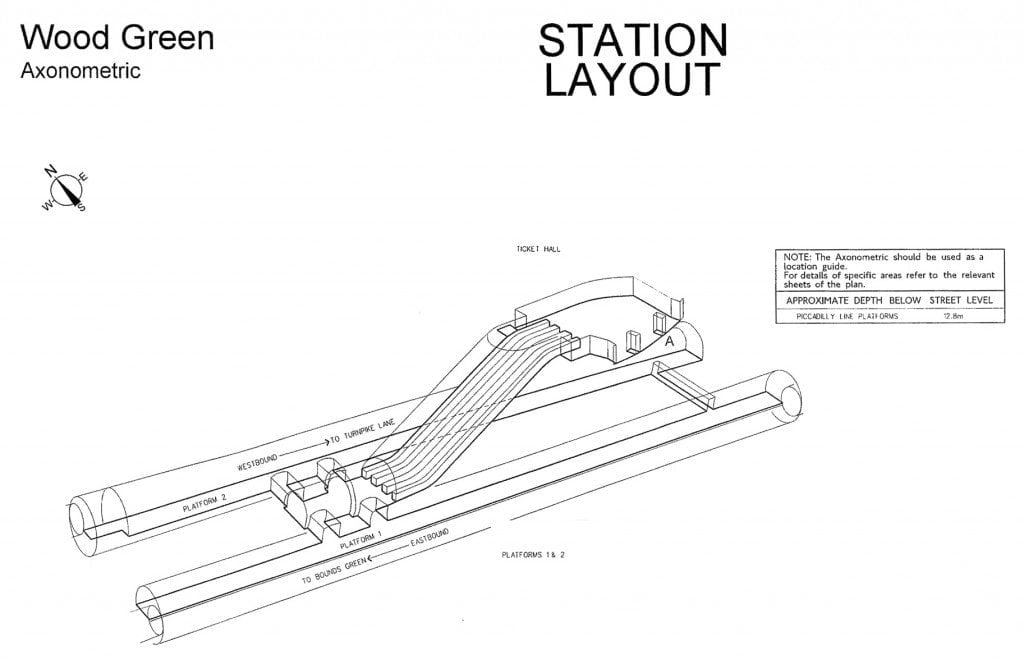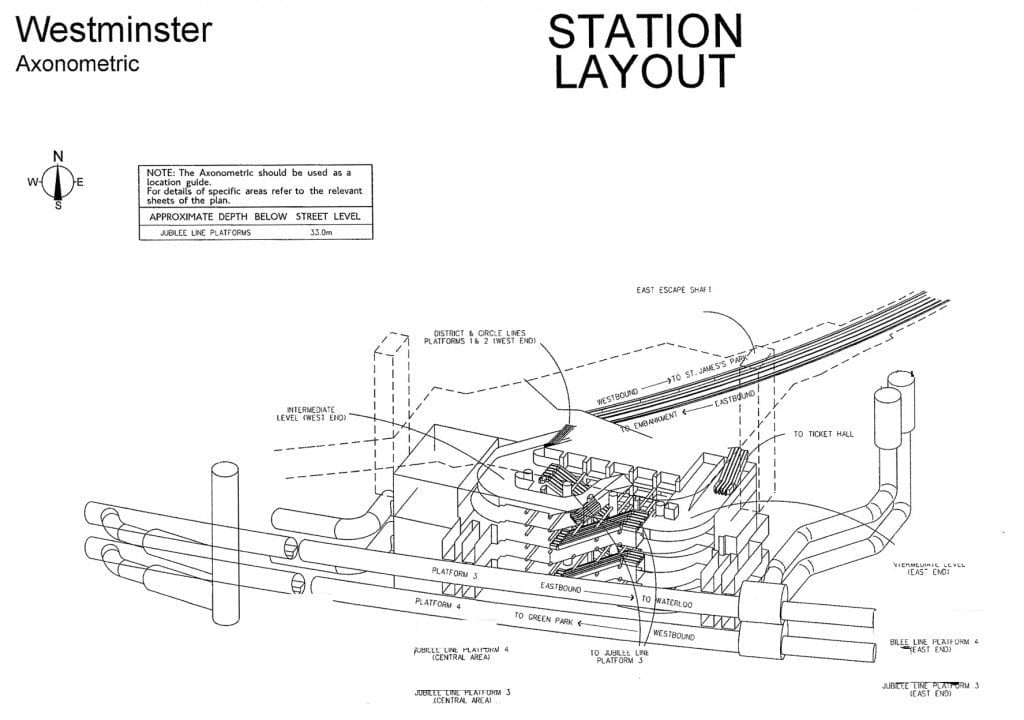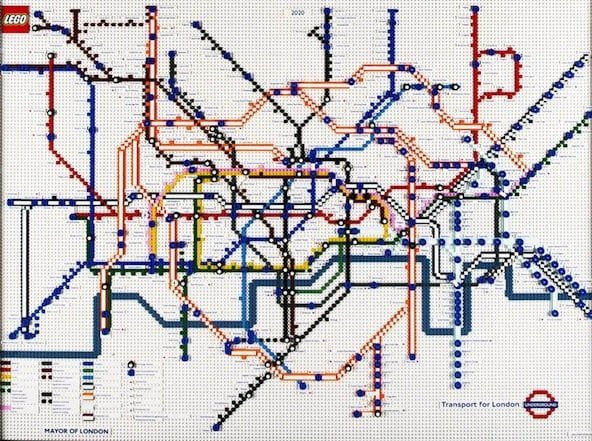You what what?
Axonometric projection is a type of parallel projection used for creating a pictorial drawing of an object, where the object is rotated along one or more of its axes relative to the plane of projection.
Got it now? No. No, you haven’t.
And so, because a picture is worth a thousand words, here’s a picture.
[click it for bigness]
It’s an axonometric representation of Wood Green Underground Station. So now you can see what I mean.
Ian Mansfield of ianvisits.co.uk documents the results of a Freedom of Information request to TfL. They were obliged to hand over axonometric representations of all the stations on the London Underground, which he shares on the link above.
Look, Wood Green is a simple station, out of town (so not too deep) (12.8m) and on a single line, perfect for illustrating what an axonometric map is. Get into some of the bigger stations though and things get complicated:
Westminster:
or Canada Water:
I suppose that these will mean more to you if you’re a Londoner, or if you used to live there. And not all the stations are shown (indeed, there are actually only 120 out of the 270 on the system), but it’s still quite fun to look at.
No?
Just me then.




